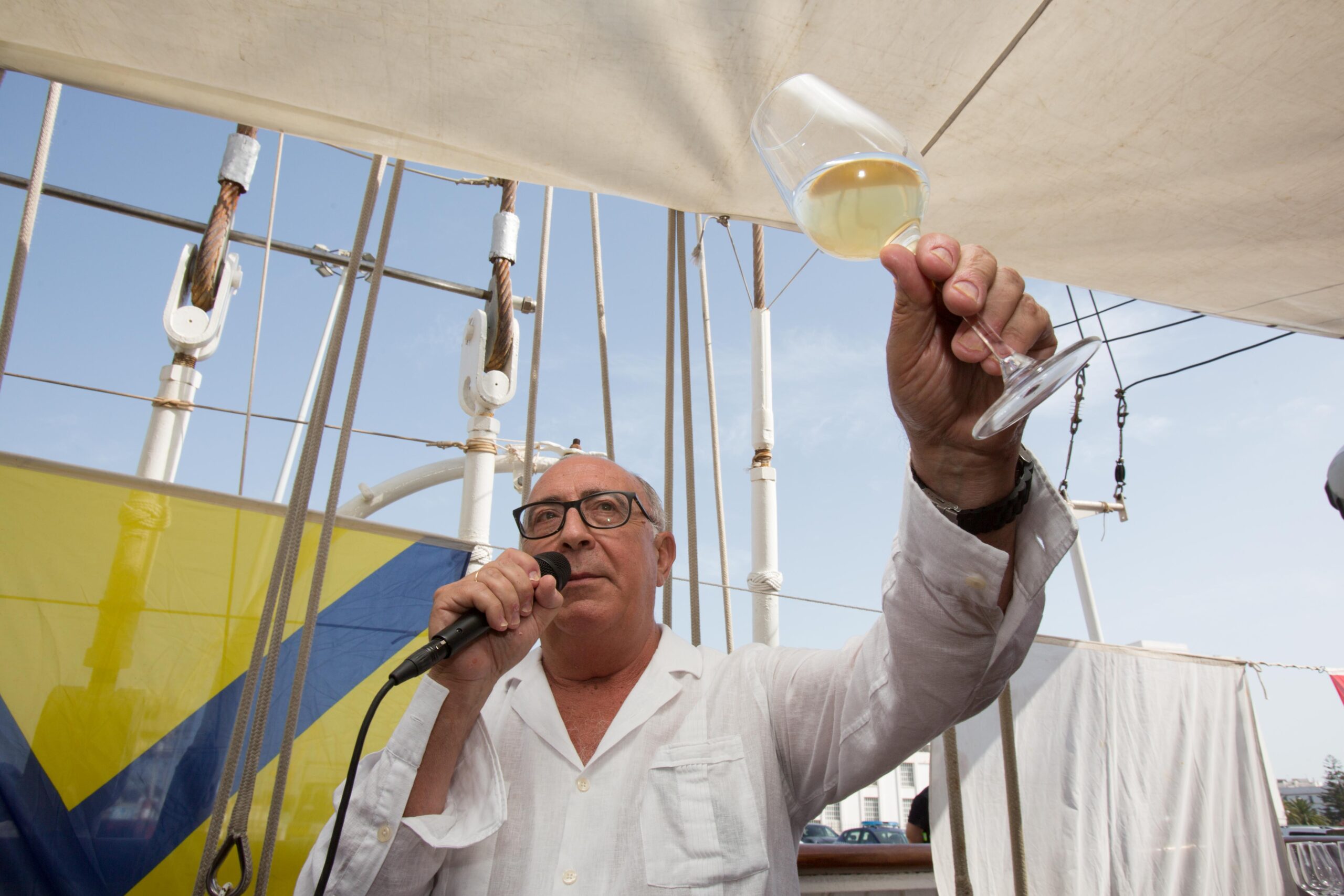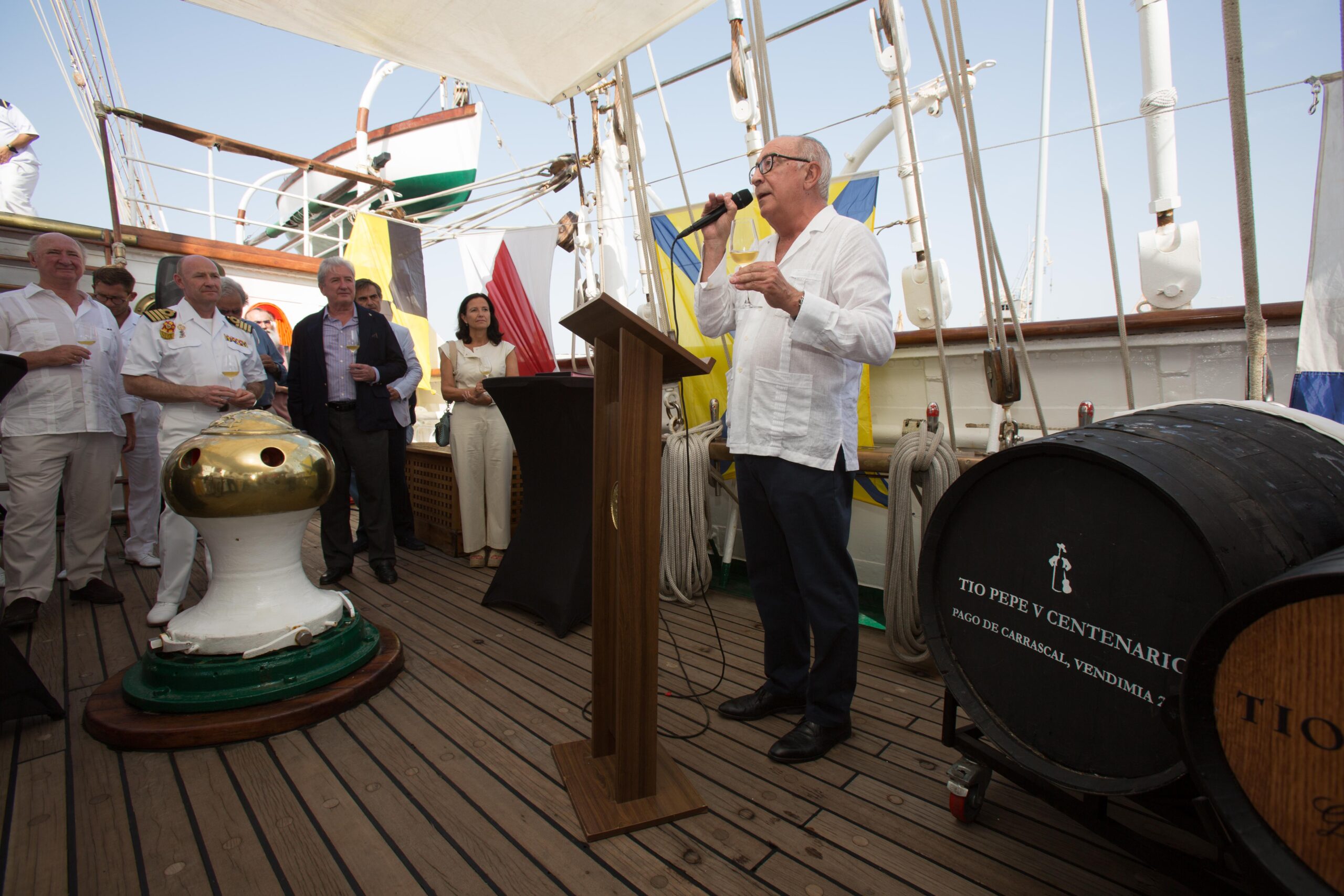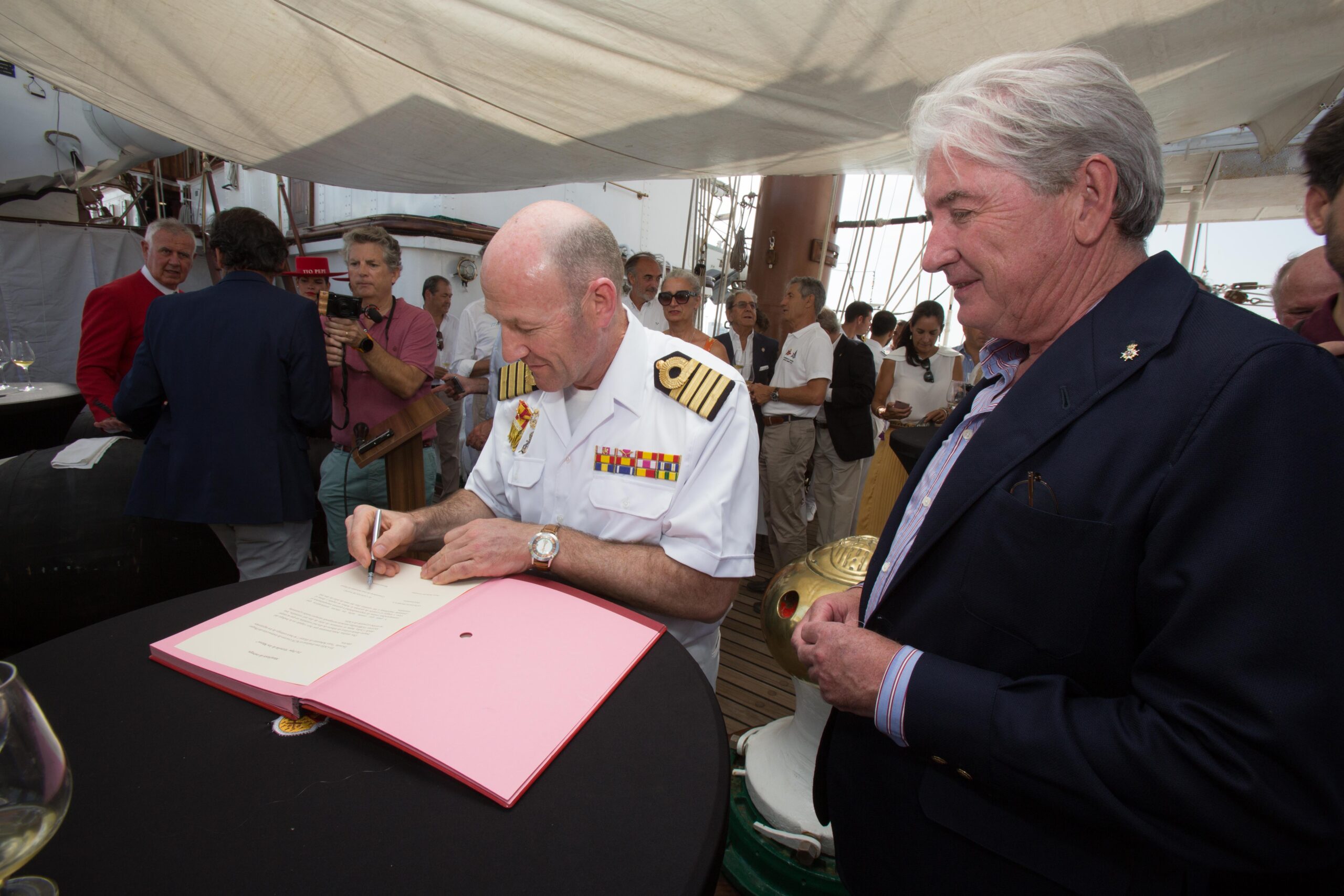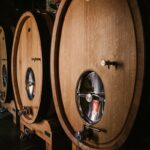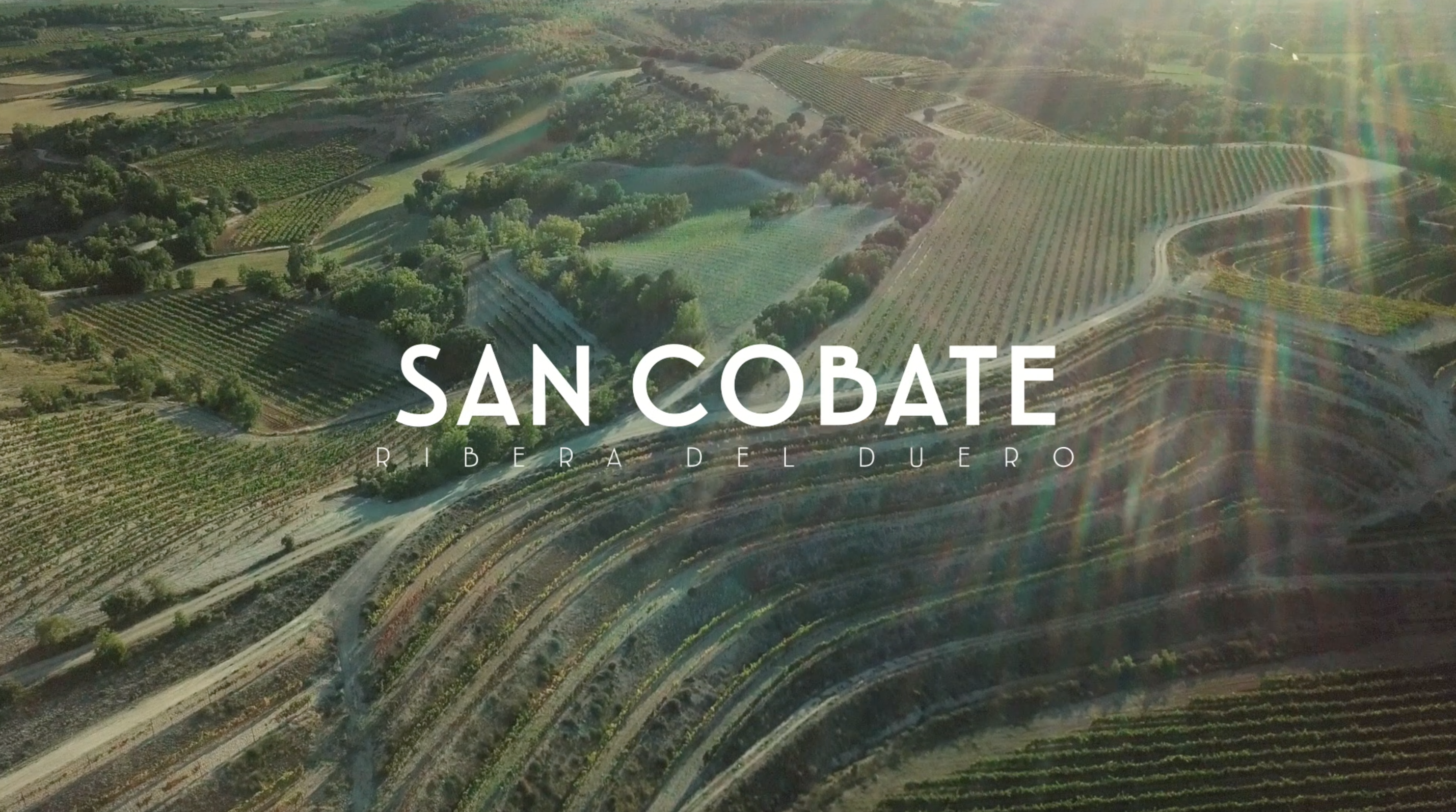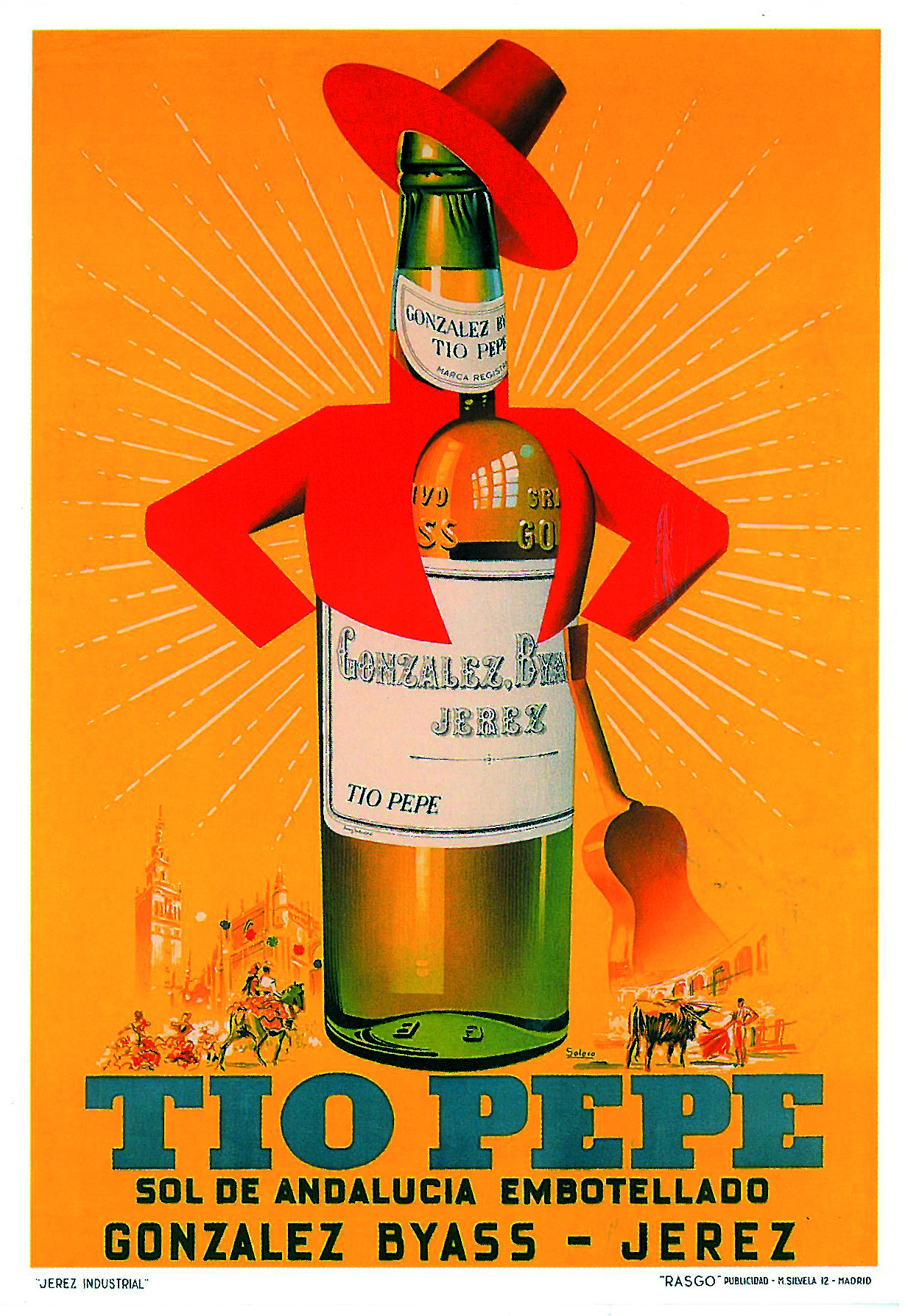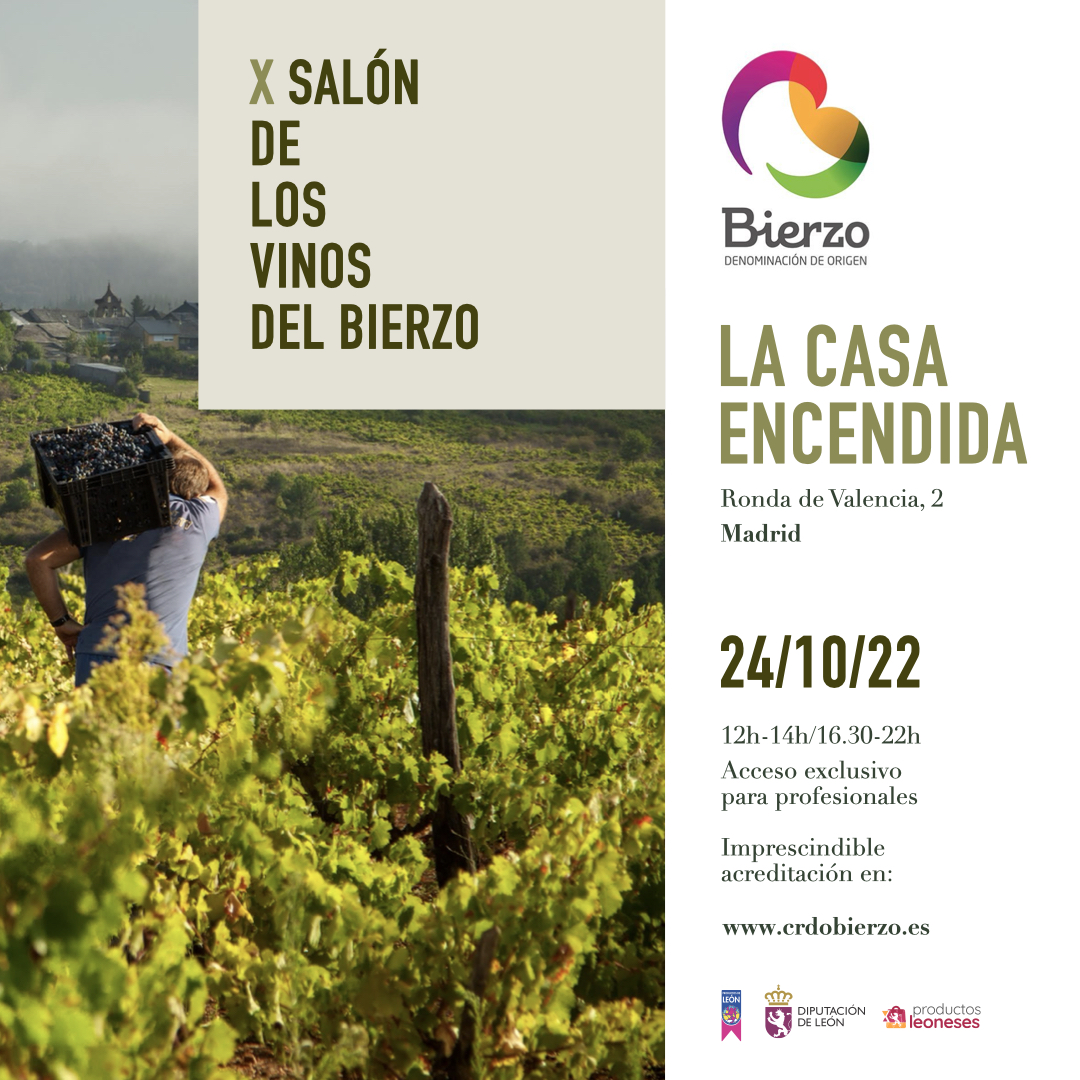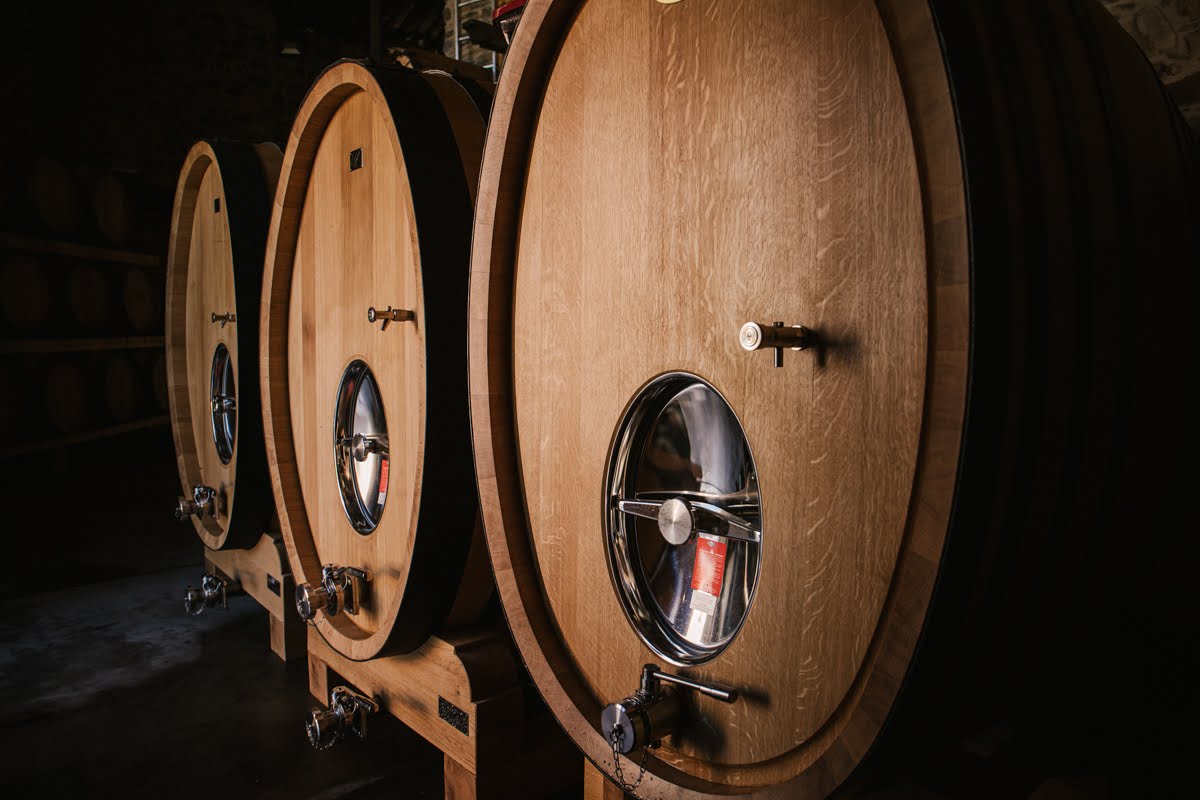
TÍO PEPE ESTRELLA DE LOS MARES «DE IDA Y VUELTA»
El vino de Jerez Tío Pepe Estrella de los Mares “de ida y vuelta” ha regresado al puerto de Cádiz a bordo del Buque Escuela de la Armada Juan Sebastián Elcano.
The Jerez wine Tío Pepe Estrella de los Mares «round trip» has returned to the port of Cádiz aboard the Navy Training Ship Juan Sebastián Elcano.
Tras cinco meses de navegación por aguas del Atlántico y el Mediterráneo, Tío Pepe Estrella de los Mares “de ida y vuelta” ha arribado al puerto de Cádiz a bordo Buque Escuela de la Armada Juan Sebastián de Elcano. González Byass ha escrito un nuevo capítulo en la historia de la mano de Tío Pepe, el Fino de Jerez más universal, y vuelve a recuperar, gracias a La Armada, la tradición bodeguera de enviar vinos en “viaje redondo” de siglos atrás.
La aventura comenzó en el mes de febrero, cuando la bodega embarcó en el Buque Escuela dos medias botas de un Tío Pepe muy especial de la vendimia 2016, procedente de dos pagos diferenciados: Macharnudo y Carrascal. A lo largo de estos meses, este Fino ha navegado a bordo del Juan Sebastián de Elcano, en su 94º crucero de instrucción con el que se culmina los actos conmemorativos del 500º aniversario de la primera circunnavegación del planeta.
After five months of sailing through Atlantic and Mediterranean waters, Tío Pepe Estrella de los Mares «back and forth» has arrived at the port of Cádiz aboard the Navy Training Ship Juan Sebastián de Elcano. González Byass has written a new chapter in the history of Tío Pepe, the most universal Fino de Jerez, and once again recovers, thanks to La Armada, the winemaking tradition of sending wines on a «round trip» from centuries ago.
The adventure began in February, when the winery shipped two half-barrels of a very special Tío Pepe from the 2016 vintage, from two different vineyards: Macharnudo and Carrascal, on board the Buque Escuela. Throughout these months, this Fino has sailed aboard the Juan Sebastián de Elcano, on its 94th training cruise, the culmination of the commemoration of the 500th anniversary of the first circumnavigation of the planet.
En esta singladura, Tío Pepe Estrella de los Mares ha evolucionado de forma excepcional, alcanzando una mayor riqueza de aromas y matices. Este vino de crianza biológica, un vino vivo, ha experimentado una evolución noble y singular que ha marcado el carácter de este Tío Pepe navegante. Asimismo, en el interior de las botas ha tenido lugar una “crianza sumergida” *, que le ha aportado unos matices únicos.
Esta evolución ha sido provocada por factores como la temperatura, la presión y, sobre todo, el vaivén continuo de las olas del mar, que han afectado a la crianza del vino, mejorando notablemente su organolepsia. Antaño, estas condiciones provocaron que el valor de los vinos, conocidos como vinos “mareados” o de “ida y vuelta”, llegara a multiplicarse por cinco.
In this voyage, Tío Pepe Estrella de los Mares has evolved in an exceptional way, reaching a greater richness of aromas and nuances. This biologically aged wine, a living wine, has undergone a noble and singular evolution that has marked the character of this navigating Tío Pepe. Likewise, a «submerged aging» * has taken place inside the barrels, which has given it unique nuances.
This evolution has been caused by factors such as temperature, pressure and, above all, the continuous swaying of the sea waves, which have affected the aging of the wine, notably improving its organoleptic properties. In the past, these conditions caused the value of the wines, known as «tidal» or «back and forth» wines, to increase fivefold.
Con la llegada de los barcos de vapor, esta práctica cayó en el olvido hasta que González Byass embarcó, en 2018, dos medias botas de XC Palo Cortado y, en 2020, otras dos de Amontillado Viña AB Estrella de los Mares. Ahora, esta bodega cierra con Tío Pepe, su vino insignia, el homenaje a aquellos navegantes que cambiaron el curso de la humanidad.
*Crianza sumergida: las condiciones de navegación y la ubicación en la bodega del barco, prácticamente al nivel del mar y con una temperatura más o menos uniforme durante toda la travesía, han hecho que la levadura, que es muy sensible a los cambios bruscos de temperatura, haya sufrido menos. Las dos medias botas han contado un vacío de 10 litros cada una, lo que ha permitido que los vaivenes del barco hundan la flor, provocando una mayor superficie de contacto y un metabolismo más intenso debido al oxígeno disuelto en el vino.
With the advent of steamships, this practice fell into oblivion until González Byass shipped, in 2018, two half butts of XC Palo Cortado and, in 2020, another two of Amontillado Viña AB Estrella de los Mares. Now, this winery closes with Tío Pepe, its flagship wine, the tribute to those sailors who changed the course of humanity.
*Submerged aging: the sailing conditions and the location in the ship’s hold, practically at sea level and with a more or less uniform temperature throughout the voyage, have meant that the yeast, which is very sensitive to sudden changes in temperature, has suffered less. The two half-barrels have had a vacuum of 10 liters each, which has allowed the swaying of the ship to sink the flower, causing a greater contact surface and a more intense metabolism due to the oxygen dissolved in the wine.

Ricardo Rodríguez González – Director
